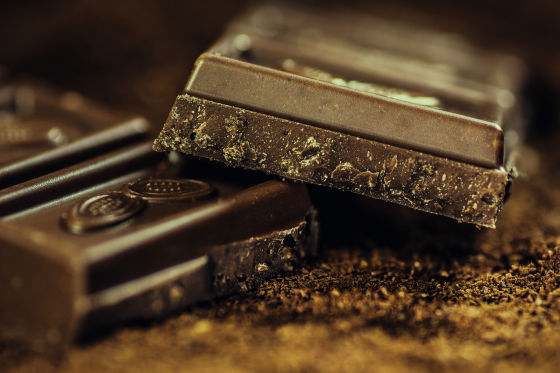A physicist examines the science behind 'a soft chocolate texture' that has been a mystery for over 100 years

by
In order to melt chocolate smoothly and smoothly in the mouth, it is important to work out 'conching', but the scientific understanding as to why conching produces the texture unique to chocolate is still very much progressing so far. Could not. So, physicists investigated 'the secret of the texture of chocolate' and clarified the science behind chocolate that inspires people.
Conching chocolate is a prototypical transition from frictionally jammed solid to flowable suspension with maximal solid content | PNAS
https://www.pnas.org/content/early/2019/05/06/1901858116
Great chocolate is a complex mix of science, physicists reveal-ScienceDaily
https://www.sciencedaily.com/releases/20019/05/190508134531.htm
One of the charms of chocolates that has stirred up people's desires since hot chocolate appeared in the UK in 1657, is the smoothness that melts in the mouth. The important thing to create this smoothness is the work of conching, and in order to distribute cocoa butter uniformly, a stirring machine called “ conche ” unique to chocolate manufacturing is used. The Konche was developed by Rodolph Linz of Switzerland in 1879, but until now the 'science to smooth chocolate' behind the Konche has hardly been understood.
You can see how the chocolate is actually stirred in the Conche in the following movie. This is the appearance of manufacturing at the chocolate specialty store 'Cacaotier Gokan', and it seems that the work of the conching can be continued for at least 24 hours.
Kitchen of 'Cacaotier Gokan' which keeps mixing chocolate for 24 hours-YouTube
To unravel the science of conching, researchers at the University of Edinburgh stir in a mixture that resembles liquid chocolate and analyze the density of the mixture and how it flows at each stage. The results show that 'conching alters the material properties of microscopic sugar crystals and other granular materials.'
Chocolate conching for several hours makes the mass of the material into fine particles, and the friction between the particles is reduced to create a smooth texture. The particles of the material before going through conching are coarse and uneven in size, so they can not flow smoothly when mixed with cocoa butter. Because of this, chocolate made in a way that does not conching will have a rough texture.

by on xay
In addition to being an important key in the development of low-fat sweets, the researchers' findings are also useful for making chocolate more efficiently. It is also expected to be useful in many other industries, such as ceramic and cement manufacturing.
Related Posts:






